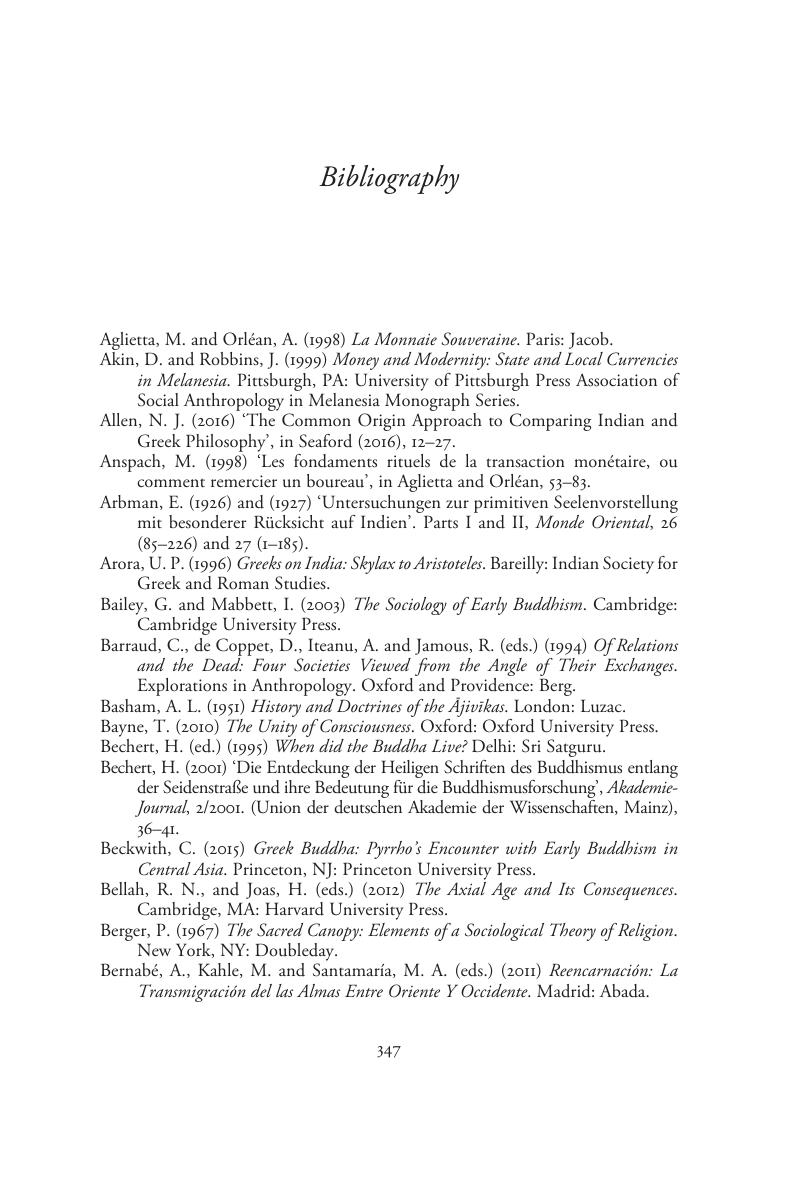Book contents
- The Origins of Philosophy in Ancient Greece and Ancient India
- The Origins of Philosophy in Ancient Greece and Ancient India
- Copyright page
- Contents
- Preface
- The Ancient Texts
- Translations
- Anglicisation of Sanskrit
- Abbreviations
- Part A Introductory
- Part B The Earliest Texts
- Part C Unified Self, Monism and Cosmic Cycle in India
- Part D Unified Self, Monism and Cosmic Cycle in Greece
- Part E Conclusion
- Bibliography
- Index of Principal Ancient Passages
- Index
- References
Bibliography
Published online by Cambridge University Press: 14 November 2019
- The Origins of Philosophy in Ancient Greece and Ancient India
- The Origins of Philosophy in Ancient Greece and Ancient India
- Copyright page
- Contents
- Preface
- The Ancient Texts
- Translations
- Anglicisation of Sanskrit
- Abbreviations
- Part A Introductory
- Part B The Earliest Texts
- Part C Unified Self, Monism and Cosmic Cycle in India
- Part D Unified Self, Monism and Cosmic Cycle in Greece
- Part E Conclusion
- Bibliography
- Index of Principal Ancient Passages
- Index
- References
Summary

- Type
- Chapter
- Information
- The Origins of Philosophy in Ancient Greece and Ancient IndiaA Historical Comparison, pp. 347 - 361Publisher: Cambridge University PressPrint publication year: 2019



